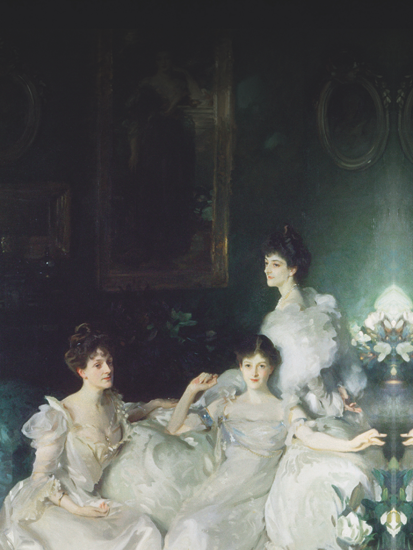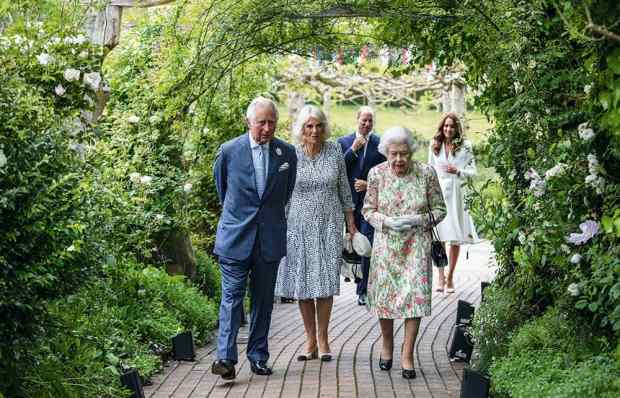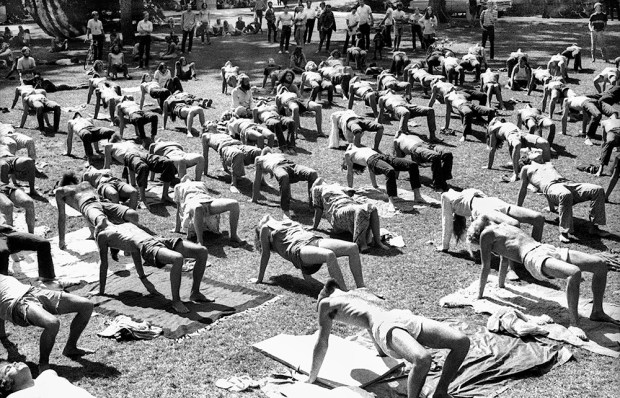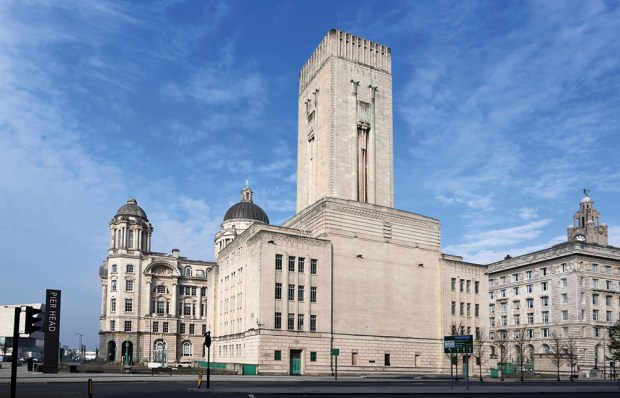The Sargent painting reproduced opposite suggests the wealth and comfort that these three sisters, Mary, Madeline and Pamela, were born to. Their father, Percy Wyndham, was the younger son of Lord Leconfield of Petworth, Sussex. He was his father’s favourite, and was left by him as much of the immense Wyndham riches as was possible. With his inheritance Percy bought a 4,000-acre estate in Wiltshire, romantically named Clouds, where he built a vast country house, designed by Philip Webb.
Pamela, the youngest sister (and my great-grandmother), is seated on the sofa, flanked by her two siblings. She was considered the most beautiful of the three, and inevitably, perhaps, she was also spoiled and vain: when being photographed she never let her finger touch her cheek for fear of leaving a mark. She was to marry Eddy Tennant. Since his was new money (the fortune stemming from the invention of dry bleaching powder in Glasgow), she considered him her social inferior — as indeed the Tennants were when set against the Wyndhams, for the latter could claim French royal blood, alongside Plantagenet, via the Percys.
Though all three sisters married well, Pamela’s proved the most financially robust match — except that her heart lay with the politician, editor and notorious womaniser Harry Cust, who claimed to love her above anyone else. She, and her eldest sister Mary, are the two who prove the most fascinating in Claudia Renton’s lucid and superbly researched book. Mary was to marry Lord Elcho, the heir of the Earl of Wemyss. She bore him seven children, while also conducting extra marital affairs with Arthur Balfour, the prime minister — who enjoyed a good whipping — and her cousin Wilfred Scawen Blunt. She even travelled with Blunt to Arabia, lived in a tent with him and had his child — while her husband, in the meantime, was holding the hand of the Duchess of Leinster in the south of France.
The third Wyndham sister, named Madeline after her mother, led a more conventional life, marrying a landed gentleman, Charlie Adeane, whose family had traditionally been in royal service. She was very nice, very normal and very happy. Her talent was for needlework and bringing up her children. But contented people are not as interesting to write about as the restless and inquisitive.
The need for sex ran strongly in most of the family. George Wyndham, Pamela’s equally vain brother, was not to die in the arms of his mistress, Lady Plymouth, but in a brothel in Paris — though it is not clear with which sex. Nor was Pamela satisfied with Eddy Tennant. She took Lord Wimborne as a lover, as well as the architect Detmar Blow — who designed Wilsford Manor, her rustic dream — though only Edward Grey is mentioned as the possible father of her son David. The latter was to marry the actress Hermione Baddeley, to Pamela’s initial disapproval, and to open the Gargoyle nightclub in Soho.
Pamela’s doctor is cited as being the father of Stephen Tennant, the eccentric and recluse, probably by his sperm tipped from a teaspoon. This I heard first from Diana Cooper: ‘We said he was one of Dr Aaron’s babies.’ If this was so, Stephen knew nothing of it. Pamela’s sister-in-law, Margot Asquith, is said to have retorted about such speculations: ‘Quite honestly, I wouldn’t know. I wasn’t under the bed.’
The great political events of the day are set alongside the main players of the story. When war was declared by Grey in 1914, Margot took a swipe at Pamela, saying that Grey and Eddy seemed to spend most of their time fishing rather than dealing with war. But Grey was distraught at making the declaration and never forgot the horrors that ensued. In that trench slaughter, Mary lost two sons and Pamela her adored eldest boy, Bim, on the Somme, aged just 19. Margot managed to write Pamela a letter of condolence in which she claimed that ‘Henry and I wept scalding tears’ at the news. Bim was immensely popular — but one wonders if Margot really did weep. The sisters-in-law remained on bad terms to the end.
In the aftermath of the war, Clouds began to be dismantled by the sisters’ nephew, Dick Wyndham, who had inherited it. First he let the house, then he sold it, along with the estate. The Metropolitan Museum in New York bought the Sargent portrait for £20,000 and Pamela was shocked that none of the sisters was even consulted. She died suddenly in 1928, aged only 57, her blood pressure raised disastrously by her daughter Clare’s wish to marry (for the third time) a vulgar social climber named Jimmy Beck from Newport, Rhode Island. Clare had previously abandoned Adrian Bethell, a charming landed squire — ‘the only gentleman my sister ever married’, according to Stephen Tennant — for the bounder Lionel Tennyson, grandson of Alfred, who ran through most of her money. Pamela had good cause for despair.
So Clouds went, and with it the money. All that remained for that branch of the family were the looks (in some cases) and the temperament. Percy’s ungovernable temper was inherited by Pamela and her daughter Clare. Both were capable of throwing themselves on the floor and biting the carpet. The beauty descended also to Clare and to her own daughter, my mother — they were photographed together for Vogue by Cecil Beaton.
So genes go on, impervious to changing times and sold estates. In this ultimately sad tale, one can perhaps be thankful for the beauty, but less so for the rages.
Got something to add? Join the discussion and comment below.
Get 10 issues for just $10
Subscribe to The Spectator Australia today for the next 10 magazine issues, plus full online access, for just $10.
Those Wild Wyndhams is published on 30 January. Available from the Spectator Bookshop, £19.95. Tel: 08430 600033
You might disagree with half of it, but you’ll enjoy reading all of it. Try your first month for free, then just $2 a week for the remainder of your first year.














Comments
Don't miss out
Join the conversation with other Spectator Australia readers. Subscribe to leave a comment.
SUBSCRIBEAlready a subscriber? Log in